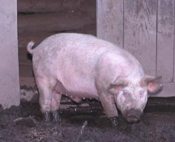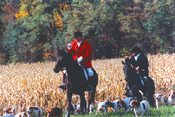
There was a time when farmers were really farmers. They were not international businessmen who would send their products half way across the globe.
They did provide the local area with quality food. With plenty of hard work and ingenuity, they developed their land and made an honest living. They proudly displayed the fruits of their labor at the county fair.
That was back in the days when dairy cows had names and were not considered “milking units.” That was when most farming problems were hammered out at the local co-op.
Times have indeed changed. The local market is disappearing. It is not rare to find blended food products taken from opposite ends of the earth. Distant bureaucracies often dictate policy from the farmers who know best. While there is nothing wrong with huge farms, smaller farmers have been nudged out of the picture by an ever-complicating web of regulation, market needs and cheap volume imports.
Farming is declining. The crisis in Europe has underscored how easily a whole industry can be turned upside down. Everything has become so big that any change in today’s globalized agriculture has unimaginable consequences that take on proportions, which leaves the ordinary farmer utterly helpless to act.
Mad Cows and Englishmen
The most graphic example of the death of farming is the foot-and-mouth epidemic raging through Europe and especially England.
Ironically, the quest for globalization has also broadcast animal viruses far and wide. Livestock diseases, once local scourges are now international plagues endangering nations and even governments.

The whole crisis has taken on proportions far beyond the means of a farmer to deal with it and perpetuated a vicious cycle of unintended consequences. In fact, foot-and-mouth can be avoided by regular vaccinations. However, to meet standards for exporting meat, the European Union forbade farmers from vaccinating animals.
Even the virus comes far beyond the nation’s borders. Imported animal feed and swill feeding a tiny portion of England’s pigs appears to have brought the disease to the nation. The government, unwilling to lose its export status, is culling healthy animals to prevent the diseases spread.
In face of such a huge crisis, animal health specialists cannot agree on a common strategy and look on helplessly while the army carries out the culling. After six weeks, the Ministry of Agriculture put the number of confirmed cases at 875, and livestock marked for slaughter in the preventive cull stands at 940,000. The lowly farmer can but look on as his perfectly healthy herd is sent away and destroyed.

Strangely enough, England’s outspoken animal rights activists who scream when a single fox is hunted down are not so vocal when a million head of livestock are slaughtered wholesale.
Equally strange is the fact that regions that do not export meat tend to take the disease in stride. In Hong Kong, Mainland China and Taiwan where foot-and-mouth is deeply rooted, no animals have been slaughtered. No restrictions have been placed on the sale of meat or ban on importing meat or dairy products from other countries with the disease, though a mere 574 pigs have died of foot-and-mouth since April 2000.
Tree Slated for Destruction
Another case of destructive agricultural policy is in the Altes Land region of Germany. Its orchards account for one-third of Germany’s fruit output. An intricate web of water channels from the Elbe River flood plain water were built in the thirteenth century by Dutchmen who reclaimed the low-lying farmland and irrigated the area’s picturesque fruit trees.

Now these 700-year-old orchards are threatened – not by viruses but by European Union bureaucrats. Regulations stipulate that all trees must be at least 16 feet from any water’s edge to prevent any chemical or herbicidal runoff.
As many as 750,000 offending fruit trees will have to be chopped down in the name of environmental protection. The farmers point out their time-proven methods of farming usually employ natural herbicides and do not harm the environment. However, there is no avenue of appeal. Like their foot-and-mouth compatriots, farmers have no choice but to destroy their healthy trees or face stiff fines or even impoundment.
Farmers like Ahrend Schuback whose family has grown apples and sour cherries in Altes Land since the 1400s, are beginning to lose faith in horticulture as a profession. He will be destroying 1,000 trees.
“Every tree we take out of production comes straight out of our income, as we don’t have any European Union subsidies or compensation for orchards,” said Mr. Schuback. “We’ve been bumping up against the survival limit for years, and this is just the shove we need to go under.”1
Germany’s vocal Greens are strangely silent on the fate of the trees. The destruction of perfectly healthy fruit trees is not nearly as news worthy as other high profile environmental causes.
The End of Farming
Epidemics and regulations are part of a growing debate not over the future of farming methods but the future of farming in Europe itself. Globalized food markets make lower-wage competition more attractive. Centuries-old traditions are undercut by industrialized food production.
Farming, once the mainstay of any economy, is losing its viability. It has, for example, been reduced to almost a niche industry in Germany. Less than 5% of the gross domestic product originates from farmland. The nation’s food producers acknowledge that cheap foreign imports are taxing their abilities to survive.
In Britain, the situation is even worse. Farming employs only 2% of the work force and accounts for about 1% of the country’s gross domestic product. In addition, British farmers are heavily subsidized.
Some Britons are suggesting that perhaps the government should cut the subsidies and leave the countryside without farmers. At best, farmers might provide the quaint and beautiful backdrop for Britain’s profitable tourist industry.
 Learn All About the Prophecies of Our Lady of Good Success About Our Times
Learn All About the Prophecies of Our Lady of Good Success About Our Times
Columnist Deborah Orr of The Independent newspaper believes Britons should face up to the fact that the agricultural industry is not economically viable. Tourism provides 6% of GDP and 7% of the work force making a great British Isles theme park much more profitable.
“Accept that agricultural Britain is not a living industry,” she wrote, “but a heritage industry.”2
The death of farming is more than the decline of a smokestack industry. Property is the vital junction where tradition and family meet. Without the stability of property, families cannot establish themselves and develop over generations. The farm has always been the hotbed for healthy traditions and the building of communities.

An exaggerated globalism has introduced policies that unfairly destroy property’s salutary effects. Families who battle to continue the ways of their fathers are faced with obstacles beyond their control. Lost forever are traditions, ways of life and cultures.
In this factory-farm scenario of interconnected world agriculture, not only the cows are mad. The wanton waste of healthy livestock and trees bears testimony to the decline of common sense.

